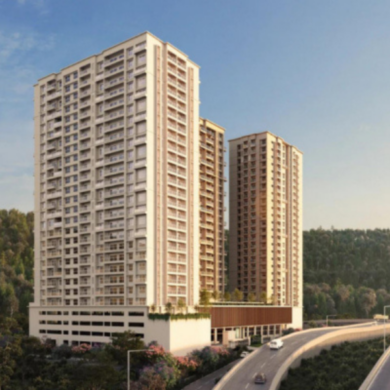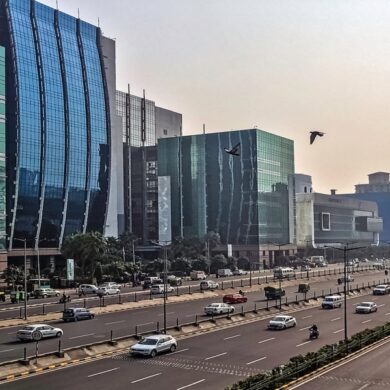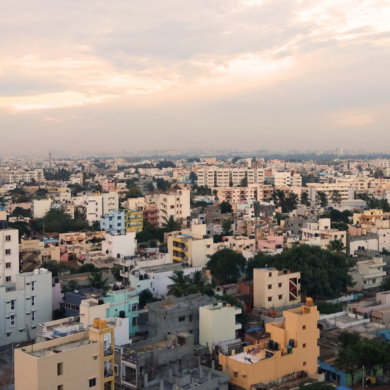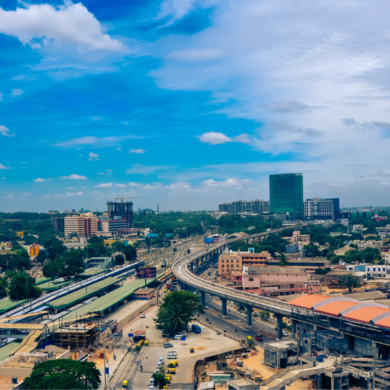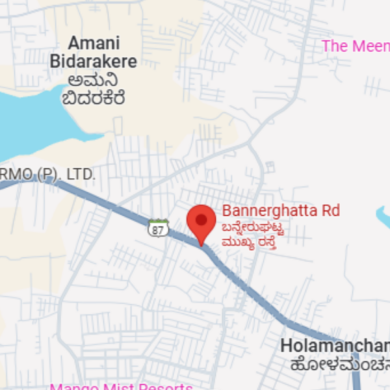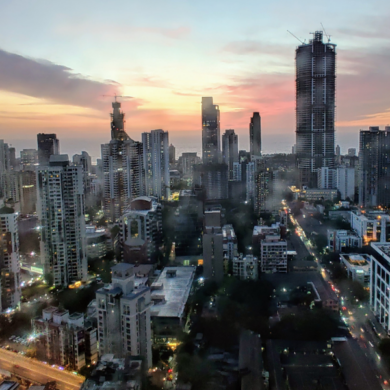
The transfer of development rights (TDR) describes making a specific amount of extra built-up area accessible in place of the landowner’s surrendered or abandoned land so that he may use the extra built-up area himself or transfer it to another party in need of the extra built-up area for a set fee.
Table of Contents
What Does TDR Mean in Construction?
The term “transfer of development rights” refers to making a specific amount of additional built-up area available instead of the area that the landowner has given up or abandoned so that he may use the extra built-up area himself or transfer it to another party in need of the extra built-up area for a predetermined fee.
What is TDR in Construction?
TDR may be viewed as a crucial raw material in the real estate sector since it enables the developer to construct over the allowable Floor Space Index (FSI) following local regulations. It becomes more significant, particularly in the suburbs of cities, as a result of increased urbanisation and a shortage of available land.
The government is compelled to pay the landowners’ compensation when it executes the forcible purchase of certain land parcels for the development of infrastructure projects. Transferable Development Rights were created because the government typically offers compensation that is less than the going rate.
How Does TDR Work in Construction?
It is a certificate that the property owner acquires from the Municipal Corporation stating that his or her property is reserved for the primary use of public services. Among these public services are roads, schools, gardens, etc. The reserved rights that the owner acquired while turning over his real estate to the Municipal Corporation are equal to the certificate that the owner earned.
It entails creating a particular amount of additional built-up space in lieu of the area the property owner ceded so that the additional built-up space may be utilised by him or her in the best way possible.
The development of underdeveloped areas is the main objective of this transfer.
It has emerged as an urban development strategy that has, inadvertently or otherwise, led to congestion.
The idea of the Transfer of Development Rights first emerged when government officials used to buy property for the construction of public facilities like roads and other infrastructure. This was done because the landowner can transfer his or her rights using this certificate, it shortens the procedure and aids in acquisition.
Let’s examine transferable development rights in India using an example now that we are aware of what they are.
If we take the example of Mumbai, neighbourhoods like Colaba, Juhu, and Bandra are among those that can brag about the most growth. These are also densely populated when compared to places like Mira Road in Northern Mumbai. Mira Road is not known as one of the most developed communities with excellent public and municipal amenities, nor does it brag about high real estate prices. It is just mildly developed at best.
Now, to make the most of the available land space, TDR is moved from areas that are already developed to those that may gain from development. All amenities are present in fully built areas, while those still in the development phase can take advantage of them. It contributes to a more widely distributed population rather than one that is concentrated in a few areas. The populace starts to take notice of such locales when development in underdeveloped regions rises, and the existing land resources are effectively used.
Purpose of Transferable Development Rights or TDR
Land acquisition for public use, particularly for road expansion, parks and playgrounds, schools, etc., in metropolitan areas is a difficult, expensive, and time-consuming procedure. To reduce the amount of time required and to make a method that might be usefully used in practice to acquire land for the aforementioned reserve objectives possible.
TDR programmes provide cash rewards to landowners who decide not to develop all or a portion of their property. Such owners have the option to legally separate their development rights under municipal zoning in return for suitable compensation. Landowners can also choose to sell their rights to developers or other landowners. The parcel of property from which development rights have been severed is permanently safeguarded by a limited covenant or conservation easement.
Furthermore, the value of such parcels of land for development is increased if transferable development rights are present. Without this option, using the property for renovation and expansion in a way that benefits both the landowner and society at large becomes nearly impossible.
Benefits of Transferable Development Rights (TDR)
Everyone benefits from this in the following ways, which is its most significant advantage:
The developer generates money by taking full advantage of the regulatory latitude provided by a transfer of development rights, receiving region.
The landowner is compensated financially according to market value for maintaining their property.
Clean drinking water and fewer floods are only two of the numerous health, environmental, and economic advantages of conserving land that the public may benefit from. Higher-density housing options may be more affordable and diverse, which benefits the public.
Land trusts, rural farmland preservation boards, and municipal open space programmes can use their limited funding to protect other important properties.
Flexibility
The Transferable Development Rights is an adaptable tool that may be used to meet a variety of growth management and land preservation scenarios. For instance, both non-residential and residential developments may get the transfer of development rights.
Using TDRs benefits non-residential projects by allowing for larger floor areas or higher ceiling heights. In contrast, residential projects adopting TDRs include new uses, such as townhouses in addition to single-family detached homes, and higher densities, such as more dwelling units per acre.
Uses Private Funding
Simply put, not enough money is available at the local, state, or federal levels to conserve all the land that need protection. The limited financing that is available is also frequently in peril.
TDR conserves land by using the large quantities of private finance flowing into real estate development projects, as opposed to conservation approaches that primarily rely on limited governmental financing.
Types of Transferable Development Rights (TDR)?
Listed below are the various types of Transferable Development Rights:
Slum TDR
The Slum Rehabilitation Authority (SRA) has given its approval to the Slum Rehabilitation Project (SRP). Every square metre of rehabilitation BUA built as part of the project is allowed to be added to by the owner, developer, or society as an incentive selling space in a predetermined ratio. The total rehab and sale area is the basis for the FSI approved for the plan.
Reserved Plots TDR
After levelling the plot and building a compound wall and gate, the owner of the allocated property must free of charge and without any encumbrances return the plot to the municipal corporation. A printed Development Right Certificate (DRC) containing FSI credit in the form of TDR proportional to the gross area of the plot relinquished multiplied by the allowed zone FSI is given to the owner of the reserved property.
Heritage TDR
To make up for the loss of development rights brought on by the limitations set by the historical committee, the owner of the historic building is given a heritage TDR. It is authorised with the State Government’s approval. Even on an island city or on any property in the suburbs, it can be used within the same ward.
How to Calculate FSI & TDR?
The authorities set and manage the FSI, but the authorities also decide the transferable development rights, which enables developers to go beyond the FSI. They both serve as crucial instruments for upcoming undertakings, and each has advantages and drawbacks of its own.
Markets for Transferable Development Rights (TDR)
Cities like Mumbai do have sizable TDR markets in existence, much like the stock market. The majority of developers buy these certificates since they may be exchanged in the market for cash and used to increase their allowed development rights. TDR trading adheres to the open market theory, in which supply, demand, and availability determine pricing fully without interference from the government. The average individual often has no idea how TDR is bought, traded, or exchanged.
Criticism of the TDR Concept
Conceptually, it appeared to be an outstanding instrument for urban development because it has aided in the growth of suburban areas. The majority of property developers, nevertheless, utilised it as a method to increase the saleable space in premium areas. As a result, there was an excessive amount of construction, which ultimately caused congestion in the suburbs, unplanned growth, and strain on the infrastructure.
In addition to this, the TDR idea has also come under fire for raising real estate prices. The real estate developers raise the final project pricing because the TDR Acquisition Cost is included in the cost of the real estate project. The Government must establish a way to monitor the magnitude of this in order to stop it.
Final Thoughts
Before beginning the building of any project, real estate developers must comply with several laws and regulations established by their state government and local corporation. For the building to start, a lot of raw materials are also required. Transferable development rights (TDR) essentially act as the raw materials that contractors need to start a project since they outline the procedures that must be followed before construction can begin and while it is taking place, all while abiding by the law.
Also Read:
What is Title Deed of Property? All You Need yo Know!
What are Preferential Location Charges?
What is Carpet Area, Built-up Area, and Super Built-up Area?
FAQ’s
1. How to Calculate TDR in Construction?
A printed Development Right Certificate (DRC) containing FSI credit in the form of TDR proportional to the gross area of the plot relinquished multiplied by the allowed zone FSI is given to the owner of the reserved property.
2. What is an example of a TDR?
A city is divided into several zones based on its development level, including completely developed, moderately developed, and poorly developed. Usually, the transferable development rights are made from completely established zones to other zones rather than the other way around. For instance, in the case of a metropolis like Mumbai, the TDR produced in the southern half of the island city (i.e., the northern section) would be put to use for development in the northern part of the suburban districts. The fundamental idea behind this utilisation is to speed up the development of undeveloped areas.
3. What is the difference between TDR and FSI?
Total Development Rights are a crucial instrument for real estate developers. The developers are given the option to expand their projects above the permitted FSI. TDR can be purchased as certificates that are offered on the market. It is in charge of developing neglected areas. It is a fairly efficient way to raise rates in certain areas of many large cities. While FSI is set by the relevant authorities, TDR can be sold on the open market. It is also required to create room for construction projects such as roads, hospitals, schools, etc., and FSI ensures that there is enough room for these projects.
4. What is the meaning of TDR in land acquisition?
5. How does TDR work in construction?
TDR is a method of land development that divides a specific parcel of land's development potential from it and permits its usage elsewhere within the established zones of the city. It enables the owner to transfer the development rights to a specific piece of property to a third party.
6. How is trading TDR done?
Cities like Mumbai do have a sizable TDR market in existence, much like the stock market. The majority of developers buy these certificates since they may be exchanged in the market for cash and use them to increase their allowed development rights.
7. What is the Full Form of TDR?
The full form of TDR is “Transferable Development Rights”.
